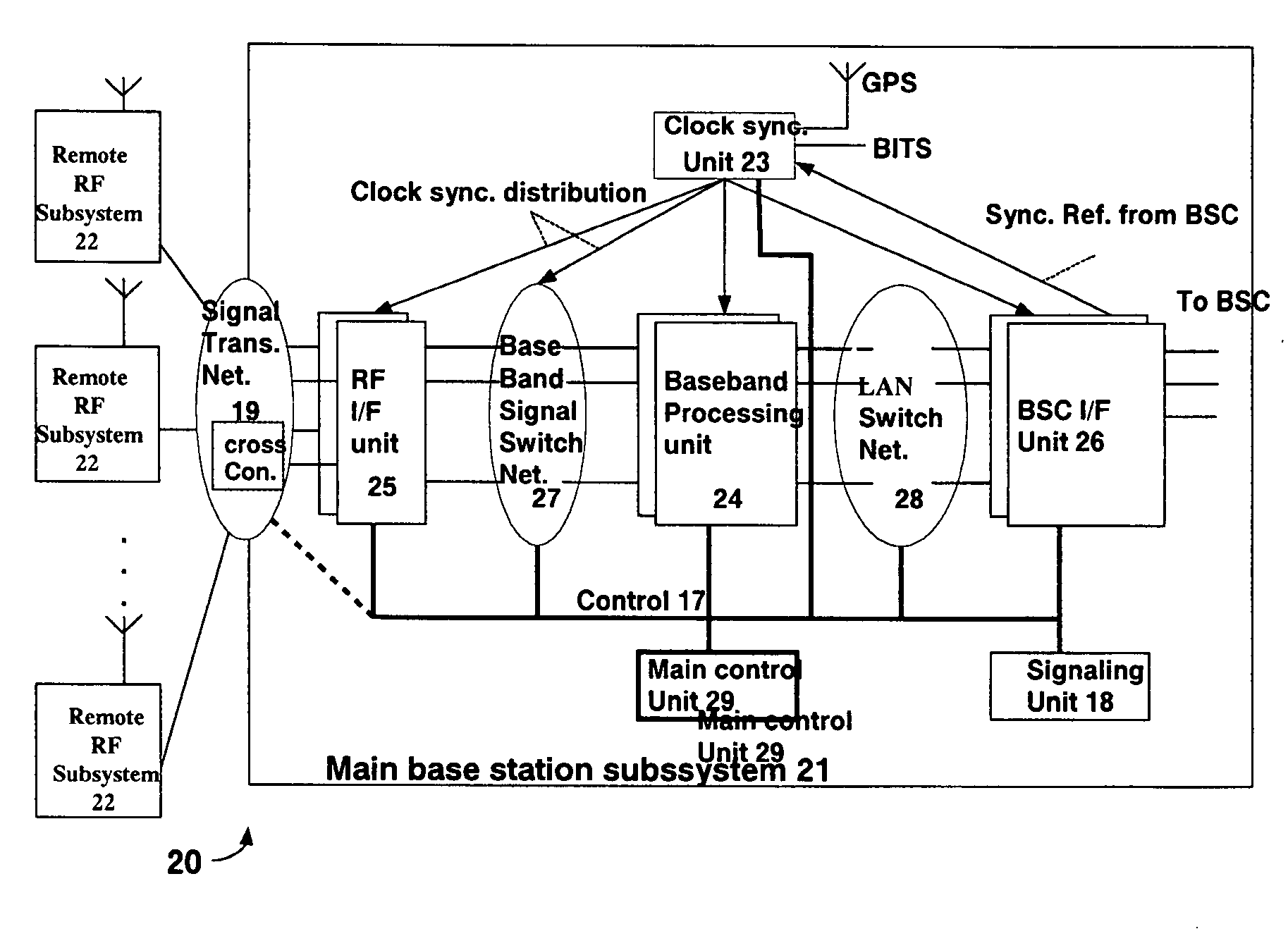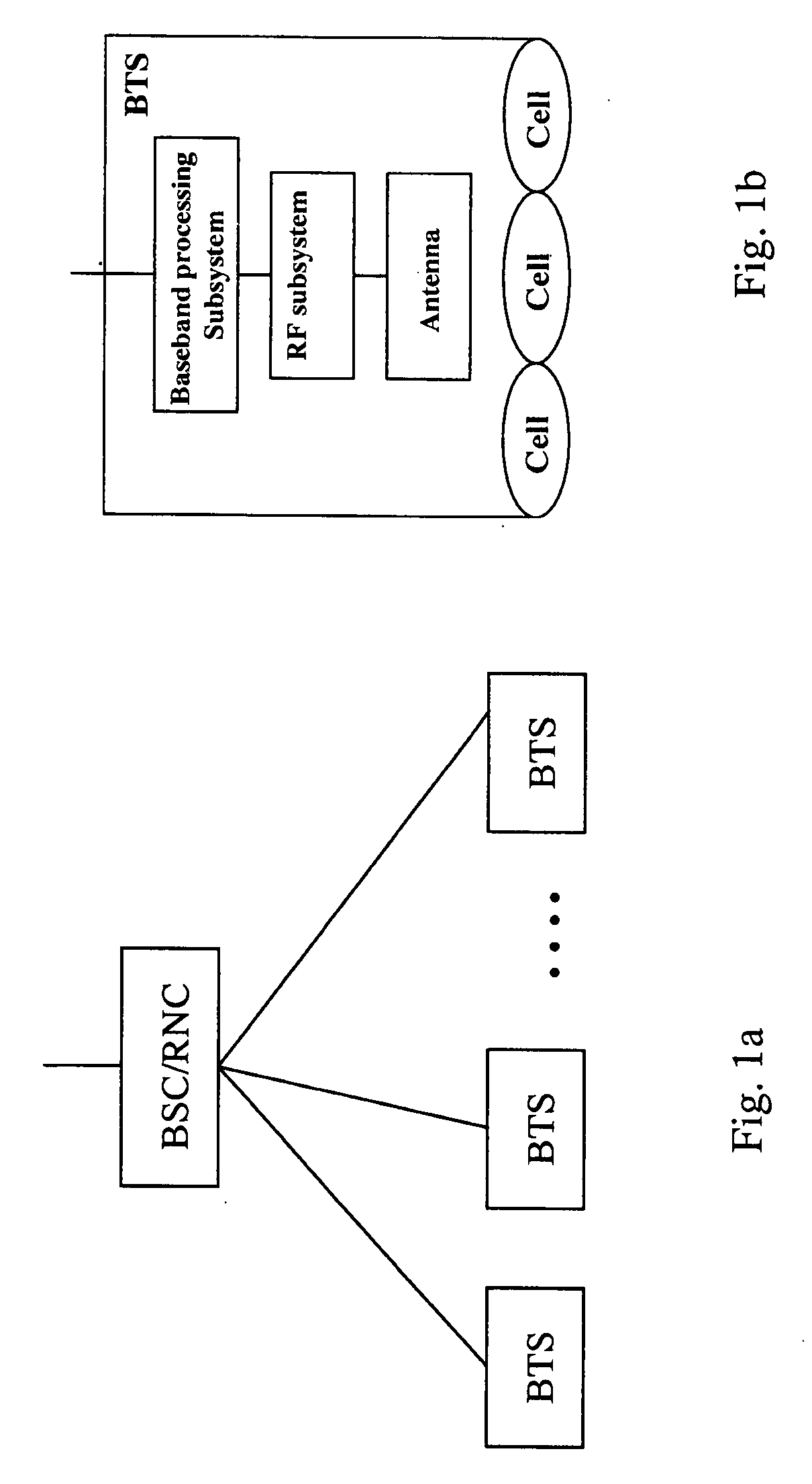Centralized base station system based on advanced telecommunication computer architecture platform
a technology of telecommunications computer and platform, applied in the field of mobile communication system base station technique, can solve the problems of sharing optimization, unoptimized, and difficult to solve the coverage problem of wireless network with conventional bts technology, and achieve the effects of improving usability, high throughput, and speed
- Summary
- Abstract
- Description
- Claims
- Application Information
AI Technical Summary
Benefits of technology
Problems solved by technology
Method used
Image
Examples
Embodiment Construction
[0113]FIG. 3a is a block diagram showing the structure of centralized base station system 20 based on remote radio frequency units having an extensible architecture.
[0114]As shown in FIG. 3a, the base station system 20 comprising a main base station subsystem 21 and a plurality of remote radio frequency subsystems 22. The main base station subsystem 21 comprising a signal transmission network 19, a plurality of remote radio frequency interface units 25, a baseband signal flow switch network 27, a plurality of baseband processing units 24, a clock synchronization unit 23, a LAN (local area network) switch network 28, a base station controller interface unit 26, a main control unit 29 and a signaling unit 18. The main control unit 29 controls the other respective portions of the main base station subsystem 21 within the same shelf through a channel 17 (as shown with thick solid line), and the channel 17 may be implemented physically through LAN network or internal bus (such as PCI bus...
PUM
 Login to View More
Login to View More Abstract
Description
Claims
Application Information
 Login to View More
Login to View More - R&D
- Intellectual Property
- Life Sciences
- Materials
- Tech Scout
- Unparalleled Data Quality
- Higher Quality Content
- 60% Fewer Hallucinations
Browse by: Latest US Patents, China's latest patents, Technical Efficacy Thesaurus, Application Domain, Technology Topic, Popular Technical Reports.
© 2025 PatSnap. All rights reserved.Legal|Privacy policy|Modern Slavery Act Transparency Statement|Sitemap|About US| Contact US: help@patsnap.com



